【OUR TOWN學生團隊成員 杜巖智報導】
豐穀宮
位於高雄市左營區的豐穀宮,是當地居民的重要信仰中心!這裡主祀神農大帝和天上聖母,同時還供奉一甲中壇元帥、福德正神、華光天王、西秦王爺等神祇,甚至還陪祀草蜢公、草蜢婆、太歲星君和五文昌帝君,真的是非常多元呢!不僅如此,豐穀宮還是鳳邑舊城城隍廟十三公廟之一,香火鼎盛,成為左營地區信仰文化的核心地標~
Fenggu Temple
Located in Zuoying District, Kaohsiung City, Fenggu Temple is a vital religious center for local residents! The temple primarily worships Shennong and Mazu, while also enshrining a diverse array of deities, including the First Jia Marshal, the God of Fortune, Huaguang Heavenly King, and Xiqin Wangye. Additionally, it pays tribute to Grasshopper Gong, Grasshopper Po, Tai Sui Xingjun, and the Five Wenchang Emperors. Such diversity truly stands out!
Moreover, Fenggu Temple is one of the thirteen temples under the Fengyi Old City Chenghuang Temple, boasting a vibrant incense tradition and serving as a core landmark of faith and culture in Zuoying.
豐穀宮的主神——神農氏,也就是我們熟知的神農大帝,可是有著滿滿的傳奇故事呢!相傳,神農大帝為了替百姓尋找可食用的藥草,親自嚐百草。若不小心吃到毒草,他的臉色會轉為黑色;而如果吃到具有療效的草藥,臉色則會變為紅色。有趣的是,廟宇中的雕刻師傅會根據這些傳說,設計出不同樣貌的神農大帝雕像。這些生動的造型不僅讓人一眼就能感受到故事中的情節,也為豐穀宮增添了許多趣味與文化意涵!
The main deity of Fenggu Temple, Shennong, also known as Shennong the Great, is surrounded by legendary tales! According to folklore, Shennong the Great tasted countless herbs himself to identify those that were edible or medicinal. If he accidentally consumed a poisonous plant, his face would turn black; if the herb had healing properties, his face would turn red.
Interestingly, the temple's sculptors often incorporate these stories into the design of Shennong the Great’s statues, creating various vivid depictions of him. These lifelike designs not only bring the stories to life but also add a rich layer of cultural and historical meaning to Fenggu Temple!
這座廟宇的建築特色可是別具一格,絕對讓人驚嘆不已,以下三點一定要特別注意:
1. 龍鳳雕塑
這些雕塑可是集美觀與寓意於一身!龍象徵著上天下海、行雲布雨的神力,在民間被視為吉祥與尊貴的象徵,甚至被古人尊為帝王的象徵。至於鳳凰,則是群鳥之首,象徵幸福與國泰民安,更有皇后的高貴形象。不僅如此,龍鳳雕塑還有實用功能,能壓制祝融之火,成為廟宇防火的一大秘訣!
2. 交趾陶藝
交趾陶可是台灣廟宇建築中不可或缺的裝飾,它源自唐三彩,屬於一種低溫彩釉軟陶,色彩鮮豔又精緻。你會發現它經常出現在廟宇的高處,比如牆堵、大脊、博脊、規帶、山牆鵝頭、鳥踏、墀頭甚至照壁上,絕對是點綴廟宇不可或缺的秘密武器!這樣的設計不僅提升了建築的藝術性,還展現了傳統工藝的細膩與巧思。
3. 八卦藻井
藻井不僅能讓室內空間更顯富麗堂皇,還有實用性哦!它能隔斷過高的空間,幫助保持室內適宜的溫度,還能防止灰塵下落,實在是一舉多得。早期的藻井設計多為方形,而到了遼、宋、金時期,出現了更為精緻的「斗八藻井」。
The architectural features of this temple are truly unique and awe-inspiring. Here are three key highlights to pay attention to:
1.Dragon and Phoenix Sculptures:
These sculptures are a perfect blend of beauty and symbolism! The dragon represents divine power over the heavens and seas, capable of summoning rain and controlling clouds. It is regarded in folklore as a symbol of auspiciousness and nobility, even revered by ancient people as an emblem of emperors.
The phoenix, on the other hand, is considered the king of birds, symbolizing happiness, prosperity, and national peace, embodying the grace and dignity of an empress. Beyond their symbolic meaning, the dragon and phoenix sculptures also serve a practical purpose—they help prevent fire damage, making them an essential element of the temple's fire safety measures!
2.Cochin ware
Cochin ware is an indispensable decorative element in Taiwanese temple architecture. Originating from Tang Dynasty tri-colored ceramics, it is a type of low-fired glazed soft pottery characterized by its vibrant colors and intricate designs.
You’ll often spot it adorning the upper sections of temples, such as walls, ridges, roof beams, decorative bands, gable finials, bird mounts, eave-end decorations, and even screen walls. This exquisite craft not only enhances the artistic appeal of the architecture but also showcases the meticulous craftsmanship and ingenuity of traditional artisans.
3.Caisson
The caisson not only adds a sense of grandeur and magnificence to the interior space but also serves practical purposes! It helps to partition overly high spaces, maintains a comfortable indoor temperature, and prevents dust from falling, making it an all-around functional design.
In earlier times, caisson designs were primarily square-shaped. By the Liao, Song, and Jin dynasties, more intricate designs, such as the Douba Caisson, emerged, showcasing a higher level of craftsmanship and detail.
在傳統民間信仰中,蓋建物可是件大事!據說這會驚動五方龍神,因此需要特別邀請高功道長進行「安龍」科儀,來安撫龍神歸位,保佑家運昌隆、人丁興旺,出入平安。所以走進豐穀宮,你會注意到兩側牆壁上設有「五色符」,它們可不是普通的裝飾,而是結合了剪刀、尺、和鏡子的驅邪寶物。剪刀與台語「家刀」諧音,象徵「家」的概念;而鏡與「境」同音,代表「境」的意涵。剪刀可剪除晦氣,鏡子則能讓妖魔無所遁形,竹尺更象徵凡事要有分寸。三者結合,傳遞出「分寸得宜,家境平安」的美好祝福!這些五色鏡符還融入了五方顏色的意義,分別以東(青)、南(紅)、西(白)、北(黑)、中(黃)五色紙製成,具有安五營的作用。特別的是,剪刀朝上寓意破天羅。
In traditional folk beliefs, building a structure is considered a significant event! It is said that construction can disturb the Five Directional Dragon Gods, requiring the invitation of a Daoist master to perform the "Dragon Calming" ritual. This ceremony appeases the Dragon Gods and ensures prosperity, familial harmony, and safe passage.
When you visit Fenggu Temple, you’ll notice the "Five-Color Talismans" on the walls. These are not mere decorations but protective charms combining scissors, rulers, and mirrors. The scissors symbolize the concept of "family" due to their homophonic connection to the Taiwanese word for "home" (ka-to). The mirror, sounding like "boundary" (jing), represents the idea of delineation and reflection. Scissors cut away bad luck, mirrors expose and repel evil spirits, and bamboo rulers symbolize the importance of propriety and moderation. Together, these elements convey blessings of balance, harmony, and peace in the home.
The five colors of the talismans—green (east), red (south), white (west), black (north), and yellow (center)—represent the Five Directions and serve to stabilize the spiritual environment. Notably, the upward-facing scissors signify breaking through obstacles in life, adding another layer of auspicious meaning.
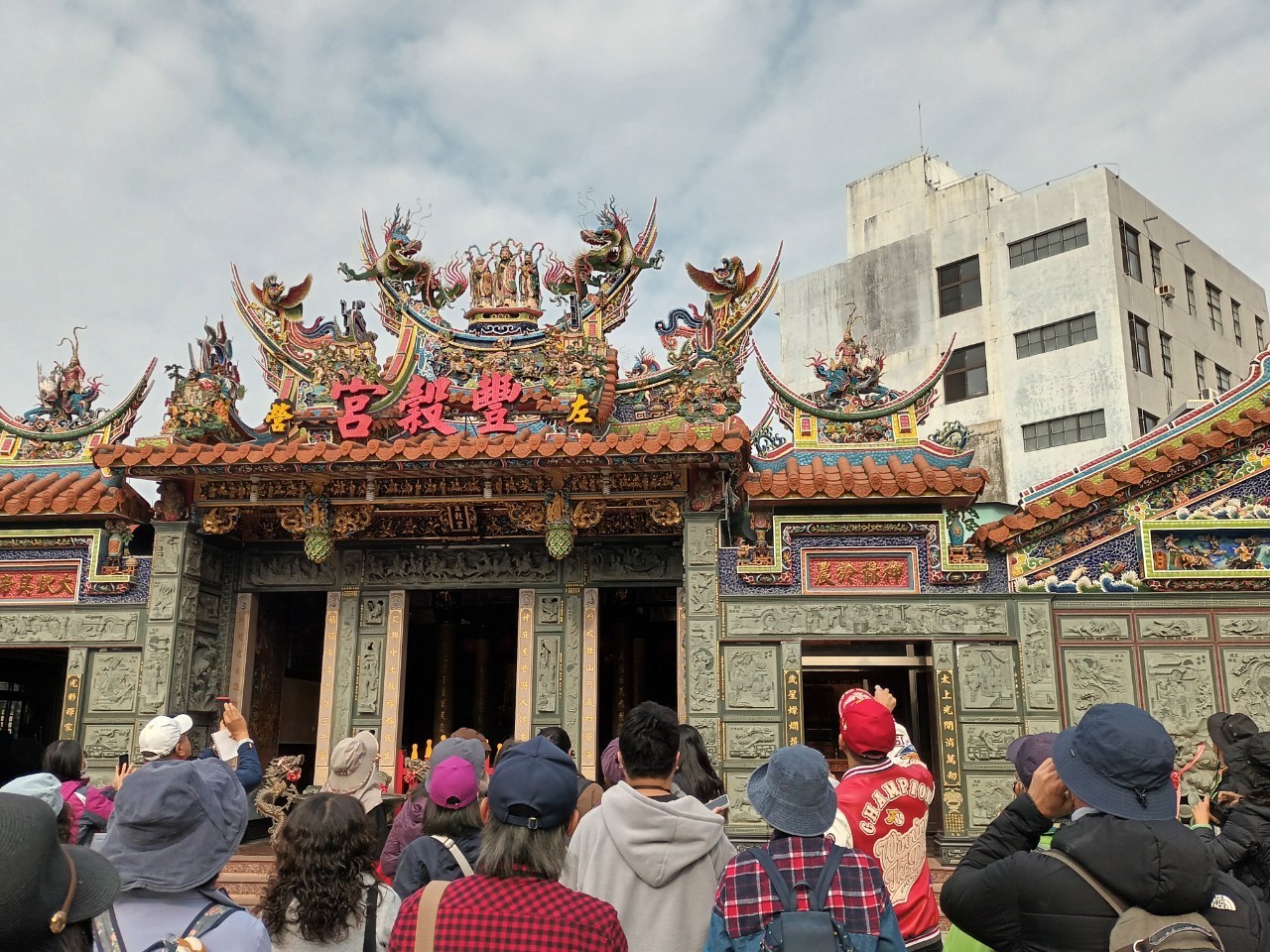
吳勇練講師正在講解左營豐穀宮(杜巖智 攝影)
The lecturer Wu Yonglian introduced the history and significance of Fenggu Temple.
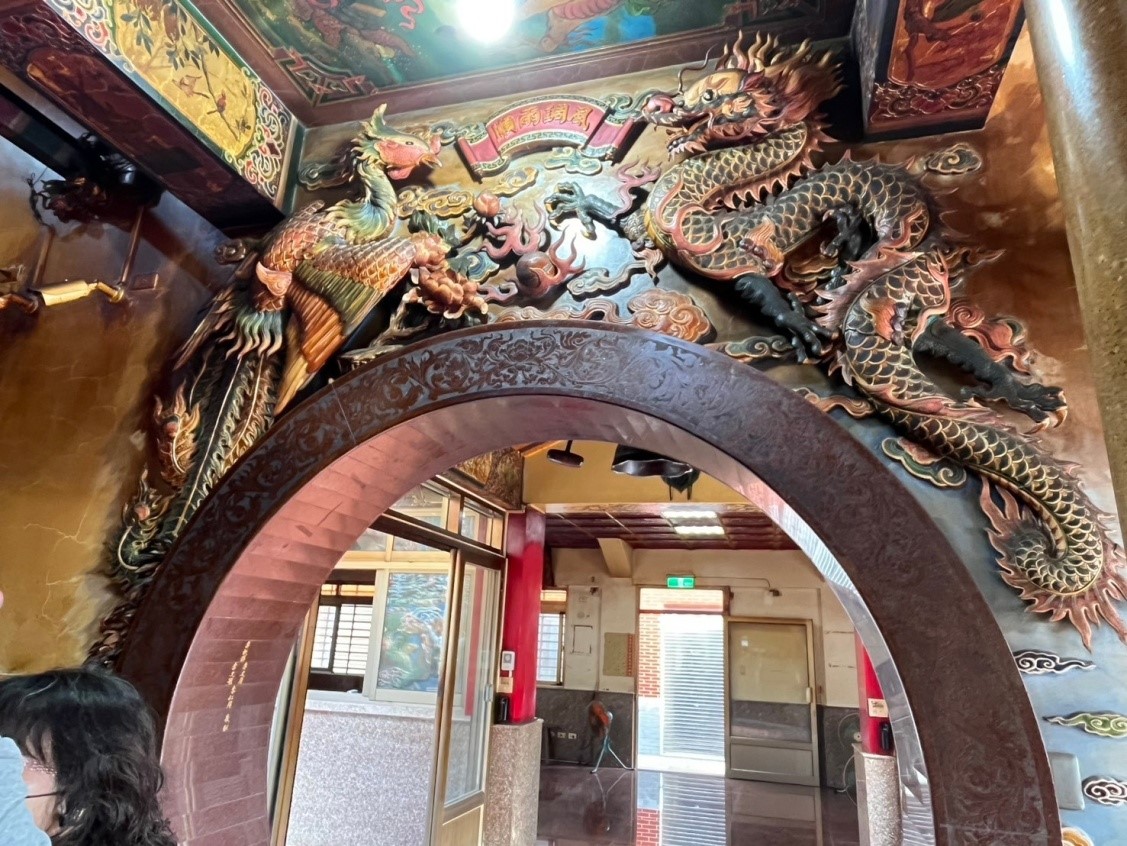
左營豐穀宮內的龍鳳雕塑(杜巖智 攝影)
The dragon and phoenix sculptures inside Zuoying Fenggu Temple.
一甲巷
你知道嗎?在以前,左營的聚落可是以「甲」為單位來劃分的哦!每10戶為一甲,並有專屬的守護神保佑。這些甲按照順序排列,從北到南一共有七甲,形成了獨特的社區分布方式。雖然現在聚落的地名已經改變了,但左營下路兩側依然保留了一甲巷、二甲巷、三甲巷等地名,滿滿的歷史氣息隨處可見。
Yijia Alley
Did you know? In the past, settlements in Zuoying were divided into units called "Jia." Each Jia consisted of 10 households and had its own guardian deity for protection. These Jia were arranged sequentially from north to south, forming a unique community layout with a total of seven Jia.
Although the names of these settlements have changed over time, historical street names such as Yijia Alley, Erjia Alley, and Sanjia Alley still remain along Zuoying’s lower road, preserving the rich historical atmosphere that can be felt everywhere.
蒸花生
在一甲巷內,有一戶保留傳統工法的民宅,專門製作蒸花生!他們使用古老的蒸爐技術,讓花生保有濃郁的香氣與鬆軟的口感,完全是台灣古早味零食的代表之一。這樣純樸又美味的小吃,真的讓人忍不住一口接一口!是不是超想親自來嚐一嚐呢?
Steamed peanuts
In Yijia Alley, there is a traditional home that has preserved an ancient craft and specializes in making steamed peanuts! Using old-fashioned steaming techniques, they ensure the peanuts retain a rich aroma and soft texture, making them a quintessential example of Taiwan’s nostalgic snacks.
This simple yet delicious treat is so irresistible that you can’t help but keep eating! Doesn’t it make you want to try it yourself?
古法熬冬瓜糖
在一甲巷的巷弄裡,藏著一家簡單樸實但超有故事的老店——「佶泰行」古早味冬瓜糖店!雖然店內品項不多,但他們堅持用手工熬煮的方式,幾十年來,這份傳統的老味道依然香飄左營。店內主打冰糖和冬瓜糖(按重量販售)。他們的冬瓜糖可是大有來頭,帶有濃濃的焦糖香味,熬煮過程中還能看到冬瓜肉,最後成為大家熟悉的冬瓜茶。過年期間,店家還會推出古早味的冬瓜條,讓人不禁淚憶起童年!趕快來看看這間充滿溫度的小店吧!
White gourd sugar
Hidden in the alleys of Yijia is a humble yet story-filled old shop—Ji Tai Hang! Although the shop offers a limited selection, it has preserved the tradition of hand-crafting its products. For decades, its nostalgic flavors have continued to captivate Zuoying.
The shop’s specialties are rock sugar and white gourd sugar, sold by weight. Their white gourd sugar is particularly notable, boasting a rich caramel flavor with visible pieces of white gourd during the cooking process, eventually becoming the familiar ingredient for white gourd tea. During the Lunar New Year, the shop also offers traditional white gourd strips, evoking fond childhood memories.
Be sure to visit this warm and charming shop to experience a taste of the past!
炒花生
早在民國50年代,左營地區可是全台知名的農耕地,主要種植的作物是菱角,同時這裡也成為花生的集散地!當時,左營舊城附近的店家會到高雄、屏東一帶收購花生,接著進行加工,花生產業一時之間繁榮無比。隨著時代變遷與都市更新,農地逐漸被建地取代,花生加工的店家也逐年減少。如今,仍堅持經營的僅剩少數幾間,而「永豐花生糖」便是這歷史洪流中的見證者之一!這家由余大哥的阿公在余家古厝創店,至今余大哥已是第三代的傳人。余大哥親手從生花生製作到花生糖,每一批產品都充滿了他對品質的自信與堅持!這樣的用心,讓人忍不住想嚐嚐這獨特的老味道,感受左營的傳統風味。
Fried peanuts
Back in the 1960s, Zuoying was renowned as one of Taiwan’s prominent agricultural areas, primarily cultivating water caltrops. It also became a major hub for peanut distribution! At that time, shops near Zuoying Old City would purchase peanuts from areas like Kaohsiung and Pingtung, then process them, leading to a thriving peanut industry.
As time passed and urbanization replaced farmlands, the number of peanut processing businesses gradually declined. Today, only a few remain, and “Yongfeng peanut brittle” stands as one of the enduring witnesses to this history. Founded by the grandfather of Brother Yu in the Yu family’s ancestral house, the business is now in its third generation.
Brother Yu personally oversees every step of the process, from raw peanuts to finished peanut candy, with each batch reflecting his confidence and dedication to quality. His meticulous craftsmanship invites you to savor this unique taste of tradition and experience the authentic flavors of Zuoying.
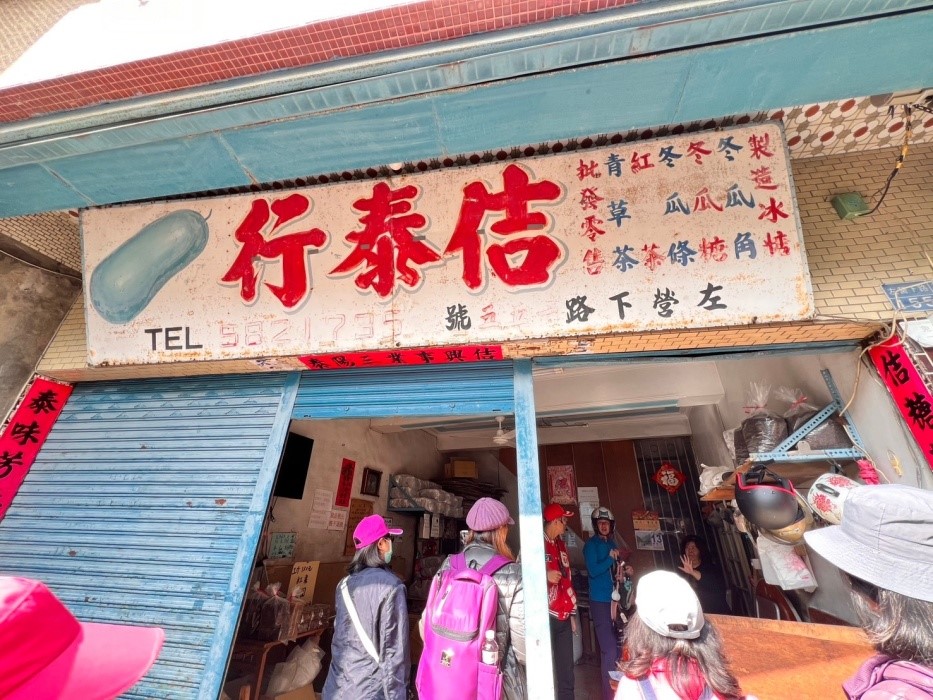
古早味冬瓜糖店「佶泰行」(杜巖智 攝影)
The traditional white gourd sugar shop "Ji Tai Hang."
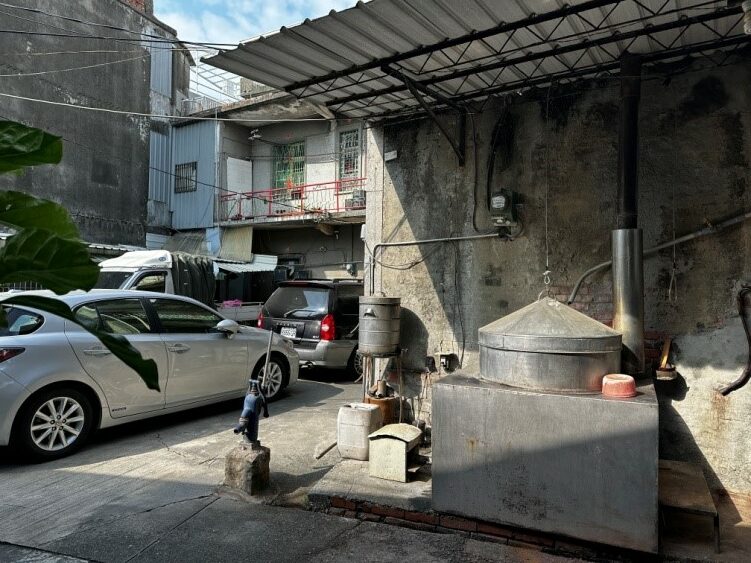
一甲巷弄內的蒸花生(杜巖智 攝影)
Steamed peanuts in the alleys of Yijia.
余家古茨(山海鎮)
位於左營一甲舊部落的余家古厝,可是清乾隆年間的珍貴歷史建築!這座官宅現存正廳,是余登發前縣長的出生地。走進庭院,你會發現保存完好的龍虎雙井和清朝巷井,整體氛圍古樸幽深,充滿歷史韻味。特別引人注目的是門口的「山海鎮」匾額,這可是用來化煞鎮宅、提升家中運勢的重要象徵。不僅如此,匾額上還寫著一句「我家如山海,他作我無妨」,也就是我家住宅如自然之山水,任何煞氣都無法對我造成傷害。這樣一座充滿故事的古厝,絕對值得親自走訪,感受它獨特的歷史氛圍與文化內涵!
Yu Family Ancestral House(Shanhai zhen)
Located in the old Yijia settlement of Zuoying, the Yu Family Ancestral House is a precious historical structure from the Qianlong period of the Qing Dynasty. This official residence retains its main hall and is notably the birthplace of former county magistrate Yu Teng-fa.
Stepping into the courtyard, you’ll find the well-preserved Dragon and Tiger Twin Wells and a Qing Dynasty alley well. The entire setting exudes a rustic and profound historical charm. One of the most striking features is the " Shanhai zhen " plaque at the entrance. This plaque serves as a symbol of protection, warding off negative energies and enhancing the household's fortune.
The inscription on the plaque reads: "My home is like the mountains and seas; no harm can come to me," symbolizing the home’s natural resilience against harmful influences. This ancestral house, steeped in stories and history, is a must-visit to fully appreciate its unique historical atmosphere and cultural significance.
醃醬菜
說到醃製美食,那可是充滿智慧的古老技藝!這些醃漬品的食材以蔬菜為主,口味則偏向酸、鹹、辣的豐富層次,不僅是為了滿足味蕾的需求,還是早期保存盛產蔬菜、延長食用期的絕佳方法。現代人有了各種保存容器,但在過去,大家可都是使用傳統的醃缸來醃漬食物。
Pickles
Speaking of pickled delicacies, they represent an ancient craft filled with wisdom! These pickled foods are primarily made from vegetables, offering a rich combination of sour, salty, and spicy flavors. Not only do they satisfy the palate, but they also served as an excellent method in the past to preserve abundant produce and extend its shelf life.
While modern preservation methods and containers are now widely available, traditional fermentation jars were the go-to tools for pickling food in earlier times.
曾氏家廟(護天宮)財子壽照壁
曾家祖先於康熙年間來到左營,當時宗族選擇定居在下路的上坡土地,並掘井取水。隨著子孫繁衍,家族的房屋逐漸往上坡延伸至左營大路,往下坡則延展至蓮池潭邊,因此,二甲巷北側幾乎成了曾家的土地。其中,曾家古厝前的古井,正是當年族人最早的用水來源。住在頂路的族人還會特地來這裡取水、挑水回家。這口古井的下緣以咾咕石砌成圓壁,上方則為磚砌的圓形短牆,泉水清澈甘甜,被譽為當地的生命之泉。有趣的是,族人還流傳著一個傳說:據說井內有一匹白馬在修行,半夜時會悄悄外出覓食,天亮前又回到井裡。雖然如今許多族人已遷居外地,但這段關於白馬的故事,依然在曾家土地上代代相傳,充滿神秘色彩!
Zeng family ancestral temple (Hutian Temple) Sanxing of spirit screen
The Zeng family ancestors settled in Zuoying during the Kangxi period of the Qing Dynasty. The clan chose to reside on the elevated land of the lower road, where they dug a well for water. As the family grew, their homes expanded uphill toward Zuoying Main Road and downhill to the edge of Lotus Pond, making the northern part of Erjia Alley almost entirely Zeng family land.
The ancient well in front of the Zeng family ancestral house was the original water source for the clan. Even those living at higher elevations would come here to draw water and carry it back home. The lower part of the well is made of coral stone, forming a round wall, while the upper part is a short, circular wall made of bricks. The spring water is clear and sweet, earning it the title of "the wellspring of life" in the area.
Interestingly, a legend about the well has been passed down through generations. It is said that a white horse resides in the well, cultivating itself spiritually. At midnight, the horse quietly emerges to forage for food and returns to the well before dawn. While many of the Zeng family members have since moved elsewhere, this tale of the white horse continues to be told on Zeng family land, adding a touch of mystery to the ancestral site.
在積善家古厝往上坡的地方,就是曾家的家廟——「護天宮」。這座家廟原本是一棟傳統大厝,雖然原始門額已無從考究,但在戰後修建成了祖廟,除了供奉歷代祖先的牌位,還敬奉觀音與媽祖,充分展現家族對信仰的虔敬之心。走進庭院會發現前側設有一座「壽子財」的照壁。這面照壁可不僅僅是裝飾,它象徵著長壽、子孫興旺與財富圓滿,是祈求家運昌隆的最佳代表!
Uphill from the Jishan family ancestral house is the Zeng family ancestral temple, known as Hutian Temple. Originally a traditional grand residence, the exact details of its original door plaque are now lost to history. However, after the war, it was renovated into an ancestral temple. In addition to housing the memorial tablets of their ancestors, the temple also venerates Guanyin and Mazu, reflecting the family’s deep reverence for their faith.
In the courtyard, the "Sanxing of spirit screen" stands prominently at the front. This spirit screen is more than just decoration—it symbolizes long life, prosperous descendants, and abundant wealth. It is a meaningful representation of blessings for the family’s continued success and harmony.
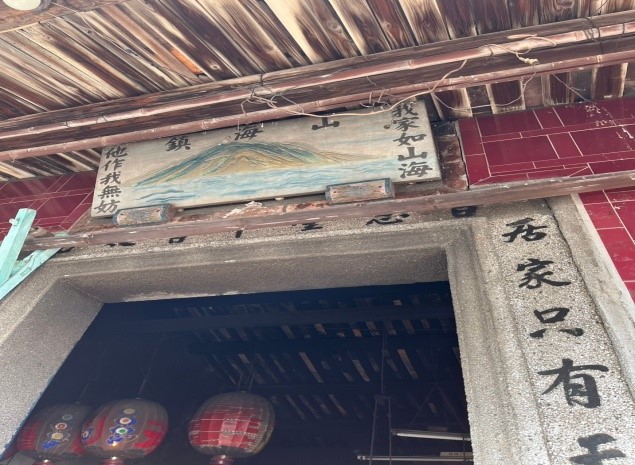
「山海鎮」,用來化煞並助家中運勢興旺(杜巖智 攝影)
The "Shanhai zhen" plaque, which is used to ward off negative energies and enhance the household's fortune.
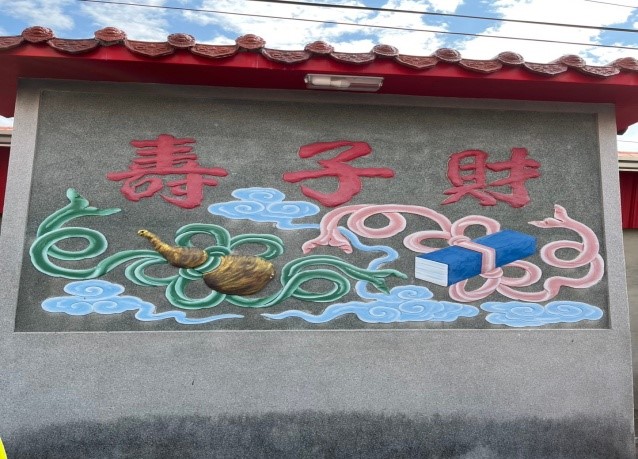
財子壽照壁(杜巖智 攝影)
The image displays the Sanxing of spirit screen.
吳氏古茨(風獅爺、土埆磚牆)
位於一甲巷,靠近吳氏古茨,然後抬頭一看,你就會發現屋頂上赫然矗立著一尊「風獅爺」!這可是傳統文化中的守護神,由武人和獅子的形象結合而成。不僅造型威武,還承載了鎮煞避邪、穩固風水、保護家宅的深厚意涵。特別是在沿海地區,房屋常常受到強勁海風的吹襲,而屋頂上的風獅爺正好派上用場,不僅幫忙「鎮風」,還象徵抵禦自然災害的力量。
Wu Family Ancestral House (Wind Lion God, Earthen bricks wall)
Located in Yijia Alley near the Wu Family Ancestral House, if you look up, you'll spot a Wind Lion God standing proudly on the roof! This guardian deity in traditional culture combines the imagery of a warrior and a lion. Its majestic design not only conveys strength but also serves to ward off evil, stabilize feng shui, and protect the home.
Particularly in coastal regions, where houses are often battered by strong sea winds, the Wind Lion God proves invaluable. It not only "tames the wind" but also symbolizes the power to resist natural disasters, safeguarding the household.
這裡的房屋可是一大特色!牆壁是由稻草攪泥後曬乾,再堆疊而成的土埆結構,展現了早期居民純樸又智慧的建築工法。而屋頂則覆蓋著傳統的瓦片,不僅實用,還增添了濃濃的古早味。更有趣的是,房子對面還設有一座照壁。這可不是普通的裝飾,而是傳統風水中的「擋煞神器」,用來阻擋不良氣場,祈求居住者平安順遂。
The houses here are truly unique! The walls are constructed using a straw method, where mud mixed with straw is dried and layered. This technique reflects the simplicity and ingenuity of early residents' building practices.
The roofs are covered with traditional tiles, which are not only functional but also add a nostalgic charm. Adding to the intrigue, there is the spirit screen situated opposite the house. This is no ordinary decoration—it is a "feng shui talisman" designed to block negative energies and ensure peace and safety for the inhabitants.
觀音宮
位於二甲巷的觀音宮,可是信仰文化中的一大亮點!早在漢代末年,漢人便開始信仰觀音,不過在宋朝以前,觀音菩薩的造像可都是男性哦!隨著信仰的傳播與深化,觀音逐漸轉化為慈悲的女性形象,展現出母愛與救度眾生的慈悲願力。你可能聽過妙善公主的傳說,這就是觀音形象女性化的典型代表。此外,還有一種說法認為,為了更貼近受苦難的婦女,觀音才轉化為女身,避免因男女授受不親而讓婦女退縮,進而方便救苦濟世。這樣充滿慈悲與智慧的轉變,不僅彰顯了信仰對人心的安慰,更凸顯了觀音宮在文化傳承中的重要地位。
Guanyin Temple
Located in Erjia Alley, the Guanyin Temple is a prominent highlight of cultural faith! As early as the late Han Dynasty, the Han people began worshiping Guanyin. Interestingly, before the Song Dynasty, depictions of Guanyin Bodhisattva were predominantly male.
With the spread and evolution of the belief, Guanyin gradually transformed into a compassionate female figure, embodying maternal love and the vow to save all beings. You might have heard the story of Princess Miaoshan, a classic representation of Guanyin's feminized image.
Another explanation suggests that Guanyin adopted a female form to better connect with women in distress. By doing so, she avoided the constraints of traditional gender interactions, enabling her to provide solace and aid more effectively.
This compassionate and wise transformation not only highlights the comfort that faith brings to the human heart but also underscores the significant role of Guanyin Temple in cultural preservation and spiritual heritage.
蘇家武功堂(照壁、茄苳入石柳)
蘇氏家族可是左營二甲地區的大姓!據說他們的祖籍來自中國福建省莆田,大約在康熙年間移民台灣,之後便在左營二甲地區安居落戶,成為當地的重要家族之一。其中,蘇家武功堂的建築設計頗具特色。它位於兩棟比自己高的房屋之間,這在風水學上被稱為「天斬煞」,若不妥善處理,可能會影響家人的運勢和健康。於是,在堂外特地設置了一面照壁,既能遮擋路人的窺視,還能反射光線讓室內更明亮。同時,照壁也有調節風水、防止外界干擾的作用,堪稱一舉多得!堂內更隱藏了一項傳統工藝瑰寶——「茄苳入石榴拱桌」!這種技術又被稱為「異木鑲嵌」,結合了茄苳與石榴(亦稱石柳)兩種木材,藉由它們的硬度與色澤差異,透過巧妙的雕刻與鑲嵌工藝,創造出令人驚嘆的藝術作品。無論是建築設計還是精緻工藝,蘇家武功堂都展現了傳統文化的獨特魅力!
Su Family Martial Hall (Spirit screen, Jia-Dung Inlaid Shi-Liou)
The Su family is one of the prominent clans in the Erjia area of Zuoying! Their ancestral roots trace back to Putian, Fujian Province, China. They migrated to Taiwan during the Kangxi period of the Qing Dynasty and settled in the Erjia area of Zuoying, becoming a significant family in the region.
One of their notable structures is the Su Family Martial Hall, which features distinctive architectural design. It is situated between two taller buildings, a feng shui challenge referred to as “the Heaven's Slash”. If not properly addressed, it is believed this could negatively impact the family's fortune and health. To counter this, the spirit screen was installed outside the hall. This spirit screen not only blocks prying eyes but also reflects light to brighten the interior. Additionally, it helps balance feng shui and prevents external disturbances, making it highly functional.
Inside the hall lies a hidden gem of traditional craftsmanship—the " Jia-Dung Inlaid Shi-Liou Table". Also known as “Marquetry”, this technique combines the Jia-Dung and Shi-Liou. The differing hardness and colors of these woods are skillfully carved and inlaid to create breathtaking works of art.
Whether it’s the architectural design or intricate craftsmanship, the Su Family Martial Hall showcases the unique charm of traditional culture!
以上就是這次文史走讀的精彩介紹,無論是歷史建築還是美食文化,都讓人流連忘返。趕快安排時間,親自來感受這片土地的故事吧!
That concludes this fascinating introduction to the cultural and historical walking tour. From historic architecture to culinary delights, every aspect leaves a lasting impression. Plan your visit soon and experience the rich stories of this land for yourself!
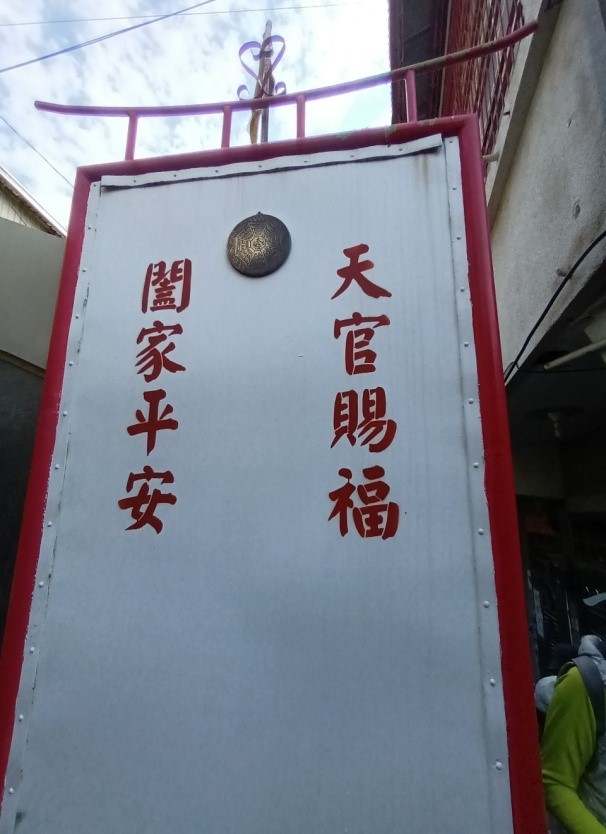
吳家照壁(杜巖智 攝影)
The image displays the Wu family spirit screen.
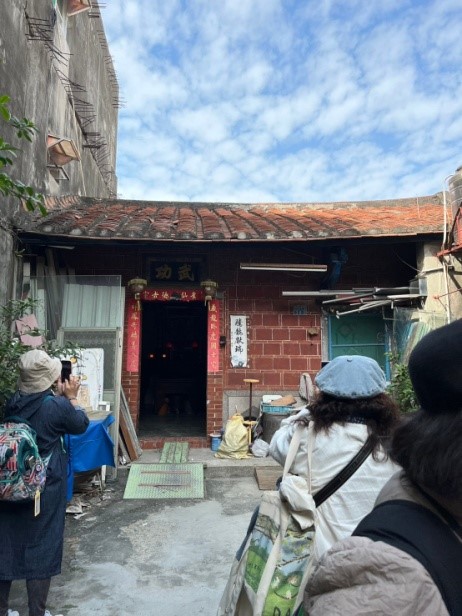
蘇家武功堂(杜巖智 攝影)
The image shows the Su Family Martial Hall
